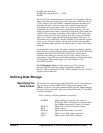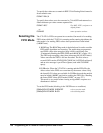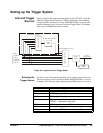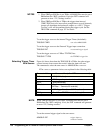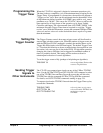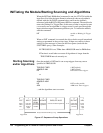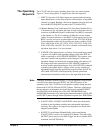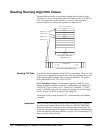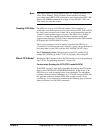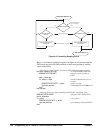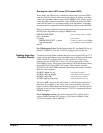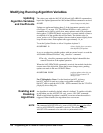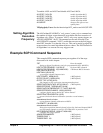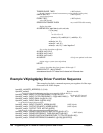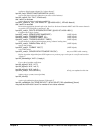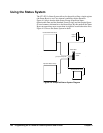
Programming the VT1422A for Data Acquisition and Control 135Chapter 4
Note After *RST/Power-on, each element in the CVT contains the IEEE-754
value "Not-a Number" (NaN). Channel values which are a positive
overvoltage return IEEE +INF and negative overvoltage return IEEE -INF.
Refer to the FORMat command in on page 293 for the NaN, +INF, and
-INF values for each data format.
Reading FIFO Data The FIFO can store up to 65,024 real numbers. Each writefifo() or
writeboth() cause that expression to be placed into the FIFO. With a FIFO
this large, many seconds worth of data can be stored, depending upon the
volume of writes and the trigger cycle time. The FIFO's most valuable
service is to keep the computer from having to spend too much time
acquiring data from the VT1422A. Data is retrieved from the FIFO with the
SCPI query DATA:FIFO:PART?<count>.
The <count> parameter can be a number larger than the FIFO (up to
2.1 billion) if a continuous data read is desired. A query can also be made of
how much data is in the FIFO with the DATA:FIFO:COUNT? query.
For VXIplug&play Users: See the functions hpe1422_readFifo32_Q
andhpe1422_readFifo_Q in the VT1422A plug&play driver Help file.
Which FIFO Mode? Reading the FIFO depends on how the FIFO mode was set in programming
step 7 of the “Programming Sequence” on page 105.
Continuously Reading the FIFO (FIFO mode BLOCK)
If the FIFO is going to read while algorithms are running, the FIFO mode
must be set to SENS:DATA:FIFO:MODE BLOCK. In this mode, if the
FIFO fills up, it stops accepting values from algorithms. The algorithms
continue to execute, but the latest data is lost. To avoid losing any FIFO data,
the application needs to read the FIFO often enough to keep it from
overflowing. A flow diagram is included on the following page to indicate
where and when to use the FIFO commands.



